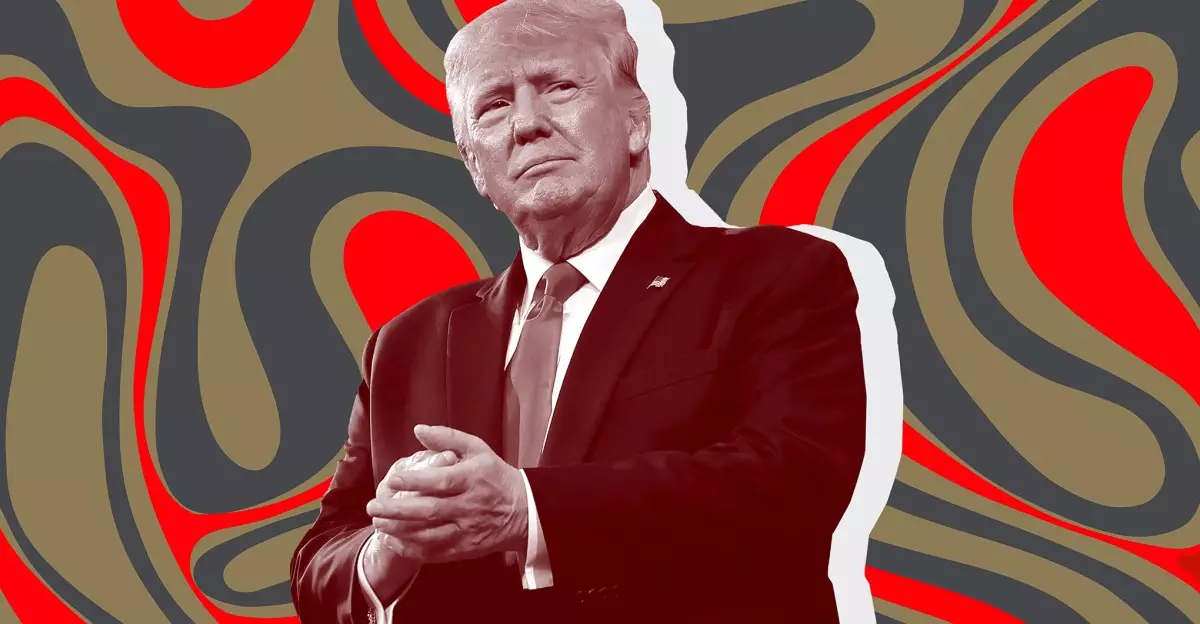In an era where political promises often collide with economic realities, the notion of bringing manufacturing jobs back to American soil has captured public imagination. This sentiment was recently echoed by White House Press Secretary Karoline Leavitt during a contentious discussion surrounding President Trump’s impending high tariffs on imported products, notably iPhones. Her claim that such products could realistically be manufactured in the United States echoed a certain optimism. However, the idea seems more rooted in wishful thinking than in pragmatic analysis.
The wild enthusiasm surrounding Trump’s tariff policies rests on the premise that American manufacturing can regain its former glory. Leavitt’s assertion that Apple’s $500 billion investment plan indicates a shift towards U.S. manufacturing resonates with those yearning for jobs in the burgeoning tech landscape. This optimism, however, hints at a misunderstanding of the vast complexities involved in modern manufacturing.
Contradictory Narratives from Industry Leaders
Despite the glitzy projections and plans, industry leaders like Steve Jobs and his successor, Tim Cook, provide a starkly different narrative. In Walter Isaacson’s biography of Jobs, we find his candid revelation about the skills deficit in America—a staggering shortfall of trained engineers that would be required to run a production line comparable to what exists in China. Jobs’ assertion that the U.S. lacked the necessary talent to support manufacturing at scale exposes a worrying gap between political rhetoric and industrial capability.
Moreover, Cook elaborates on this reality, highlighting that the competitive edge of China is not just rooted in lower labor costs, which many in the U.S. cling to as a justification for outsourcing. Instead, he emphasizes the concentrated skill set found in China that simply doesn’t exist in the same capacity in America. His assessment reflects a sobering acknowledgment of the current state of U.S. education and vocational training, raising questions about our ability to meet complex manufacturing demands.
The Workforce Challenge
The most glaring issue lies in the workforce. The notion of millions of workers “screwing in little screws” to create iPhones in America glosses over the reality of an intricately skilled labor force required in the tech sector. As Cook indicated, manufacturing these sophisticated devices necessitates advanced tooling and a precision brought about by years of specialized training—elements that America struggles to provide at scale. This workforce challenge casts a long shadow over any conversation regarding the revival of American manufacturing.
There exists a fundamental mismatch between the romanticized vision of factory jobs and the actual skill requirements of high-tech manufacturing. Even as politicians rally behind promises of job growth, the lack of a sufficiently skilled labor pool offers a painful dose of reality. Without addressing educational pathways and vocational training, bringing manufacturing back to the U.S. remains a fantasy.
The Economic Reality Check
As the world shifts towards advanced manufacturing, the economic implications of these decisions become stark. The potential for tariffs to create a manufacturing renaissance in the U.S. assumes an artificial inflation of prices and disruption of supply chains. If companies like Apple were to suddenly shift production back to the States, the associated costs would spill over into retail prices, affecting the very consumer base that policymakers aim to support.
The investment of $500 billion does not automatically translate to job creation; rather, it acts as a gesture toward a vision plagued by unrealistic expectations. Policymakers need to embrace a more nuanced understanding of the complexity involved in modern manufacturing. They must also confront the hard truth that the global supply chain functions on interdependent systems that cannot be quickly or easily unraveled.
Rethinking American Manufacturing
Instead of leaning into the exciting but implausible dream of resuscitating a bygone era of manufacturing, American policymakers should focus on pragmatic solutions to bolster innovation and workforce development. Sustainable job growth will only emerge through investments in education and training that align with the rapidly evolving demands of the 21st-century economy.
This period of uncertainty surrounding the manufacturing sector calls for a refreshing perspective—one that transcends magical thinking and embraces an innovative approach to economic policy. A realistic appraisal of American manufacturing might just lead us toward genuine progress rather than hollow promises.

